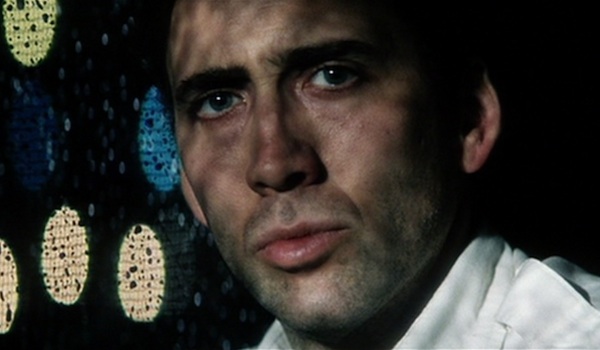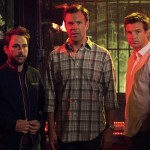Bringing Out the Dead Review
Arguably one of Martin Scorsese‘s most forgotten (and forgettable) titles, 1999’s Bringing Out the Dead is a slippery eel of a film that eludes classification as defiantly as it does a traditional narrative trajectory. We never see our protagonist, Nicolas Cage‘s Frank Pierce, in a good place, so as far as the “downward spiral” character arc goes, Bringing Out the Dead is only concerned with the last few steps above bottom. It’s an intriguing take that’s presented gorgeously, but it’s ultimately derailed by the very stasis that makes it such an unusual undertaking. Frank and those around him simply spin their wheels for two hours. It’s never boring, but it feels rather unfulfilling.
Pierce is a New York EMT who consistently seems like he’s one call away from losing his mind. Bringing Out the Dead follows him for three days sometime in the early 1990s. On day one, he’s partnered with Larry (John Goodman), a relatively normal and genial (albeit aloof) man who, unlike Frank, removes any semblance of emotion from his day-to-day duties. Marcus (Ving Rhames) is Frank’s partner the following day. A devout Christian, Marcus loves his job because he believes every life he saves serves as a reaffirmation of God’s grace.
To call Frank’s third partner, Tom (Tom Sizemore), the opposite is the ultimate understatement. This is a guy who creates emergencies when he beats the piss out of those he disagrees with, those who irritate him (like Noel, a mentally handicapped man played by Marc Anthony).
There’s a fourth individual who affects Frank’s life during this stretch in a big way. Mary Burke (Patricia Arquette) is an ex-junkie and the daughter of the man whose life Frank saves as the film opens. Mr. Burke (Cullen Oliver Johnson) lost his heartbeat for nearly ten minutes, and while Frank was able to resuscitate him, he needs constant supervision and regular jolts from the defibrillator to continue on. Mary hangs around the hospital and sees Frank coming in and out all day and night. The two share an almost immediate connection, but neither is exactly in the ideal mental state for a typical relationship to blossom.
It’s hard to pinpoint why the Mary-Frank pairing doesn’t work, but it’s perhaps the biggest reason why Bringing Out the Dead never totally clicks. We know Frank is the kind of guy who gets emotionally involved with strangers. We know he’s in a particularly vulnerable place and looking for a way out. Mary, presumably, can offer that, but it’s never clear why she’d want to. Yes, she’s a recovered addict, and the near death of her father has awoken some demons, but is Frank really the best outlet for her right now? It seems like he’s more of a project than she’d be able to handle, and in the absence of palpable romantic chemistry, the coupling makes little to no sense.
Frank’s seemingly endless parade of emergency calls, however, is gripping stuff. Scorsese manages to make time stand still in this hellish place. It’s almost always night, but even the few daytime scenes are tinged with a colorlessness that perfectly conveys the main character’s state of mind. The other characters Frank meets along the way are bursting with energy. Cliff Curtis has a great cameo as an uber-sleezy drug dealer, while Marc Anthony surprises with a pretty bold performance of his own.
The performance at the center of the film is merely adequate. Nic Cage has been both much better (Leaving Las Vegas, Adaptation) and much worse (everything post-World Trade Center). Frank Pierce is a riff off a familiar Cage character—he who is overwhelmed and full of nervous energy. He channels that energy in an unusual way, and in doing so, he creates a character who’s rather melancholy and sometimes a little dull.
Scorsese’s handle on the craft of filmmaking is as masterful as ever with the film’s cinematography standing out in a way that’s atypical of most Scorsese pictures; If you’re looking for beautiful New York photography or the director’s usually elegant use of the steadicam, look elsewhere. In this way (and in many others), Bringing Out the Dead serves as an interesting transition into the new millennium for the director. He spent much of the 1990s outside his comfort zone, but bigger (much bigger) things are about to come as we enter a period of quality filmmaking that few directors can match.

















